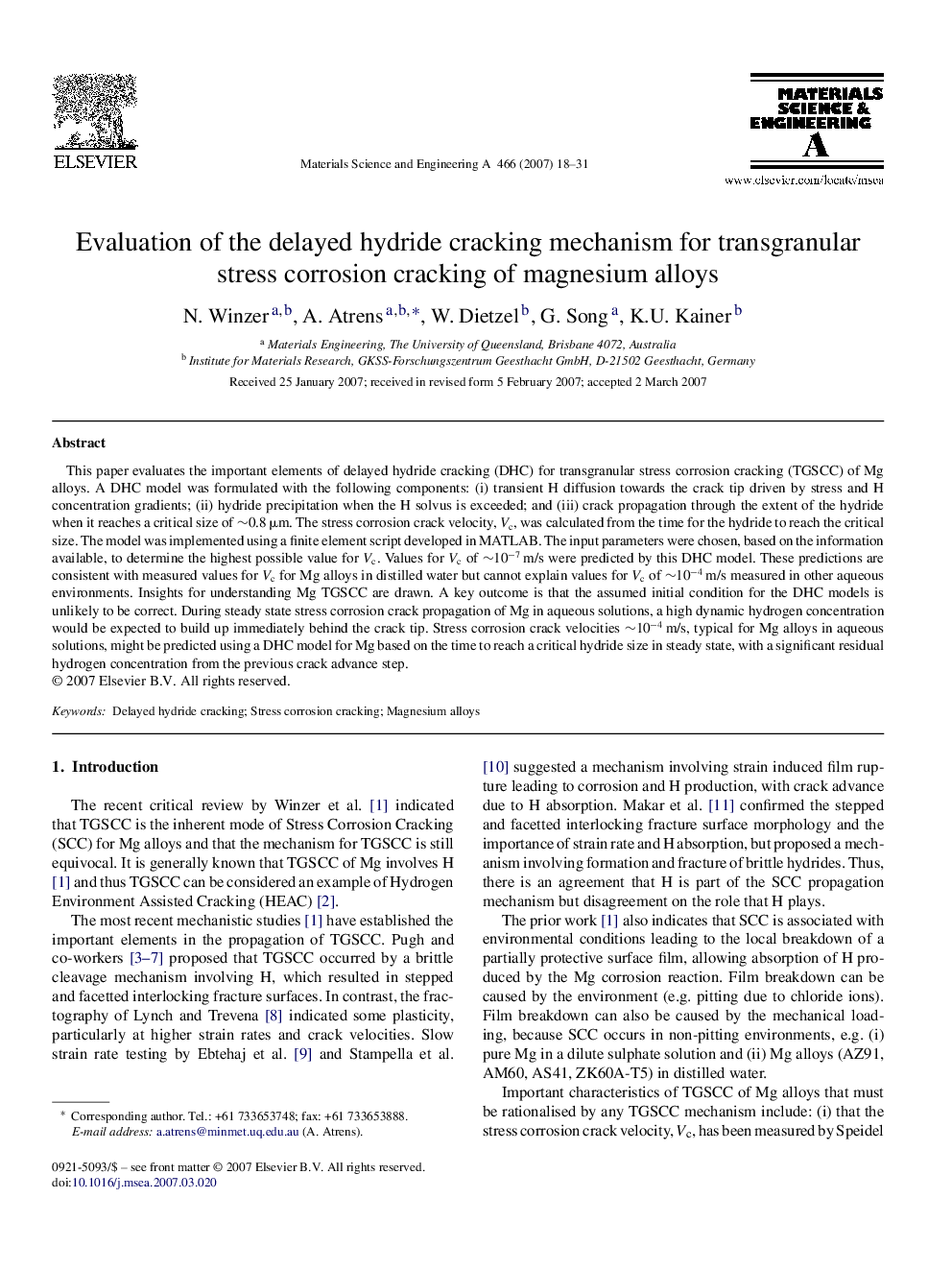| Article ID | Journal | Published Year | Pages | File Type |
|---|---|---|---|---|
| 1583632 | Materials Science and Engineering: A | 2007 | 14 Pages |
This paper evaluates the important elements of delayed hydride cracking (DHC) for transgranular stress corrosion cracking (TGSCC) of Mg alloys. A DHC model was formulated with the following components: (i) transient H diffusion towards the crack tip driven by stress and H concentration gradients; (ii) hydride precipitation when the H solvus is exceeded; and (iii) crack propagation through the extent of the hydride when it reaches a critical size of ∼0.8 μm. The stress corrosion crack velocity, Vc, was calculated from the time for the hydride to reach the critical size. The model was implemented using a finite element script developed in MATLAB. The input parameters were chosen, based on the information available, to determine the highest possible value for Vc. Values for Vc of ∼10−7 m/s were predicted by this DHC model. These predictions are consistent with measured values for Vc for Mg alloys in distilled water but cannot explain values for Vc of ∼10−4 m/s measured in other aqueous environments. Insights for understanding Mg TGSCC are drawn. A key outcome is that the assumed initial condition for the DHC models is unlikely to be correct. During steady state stress corrosion crack propagation of Mg in aqueous solutions, a high dynamic hydrogen concentration would be expected to build up immediately behind the crack tip. Stress corrosion crack velocities ∼10−4 m/s, typical for Mg alloys in aqueous solutions, might be predicted using a DHC model for Mg based on the time to reach a critical hydride size in steady state, with a significant residual hydrogen concentration from the previous crack advance step.
